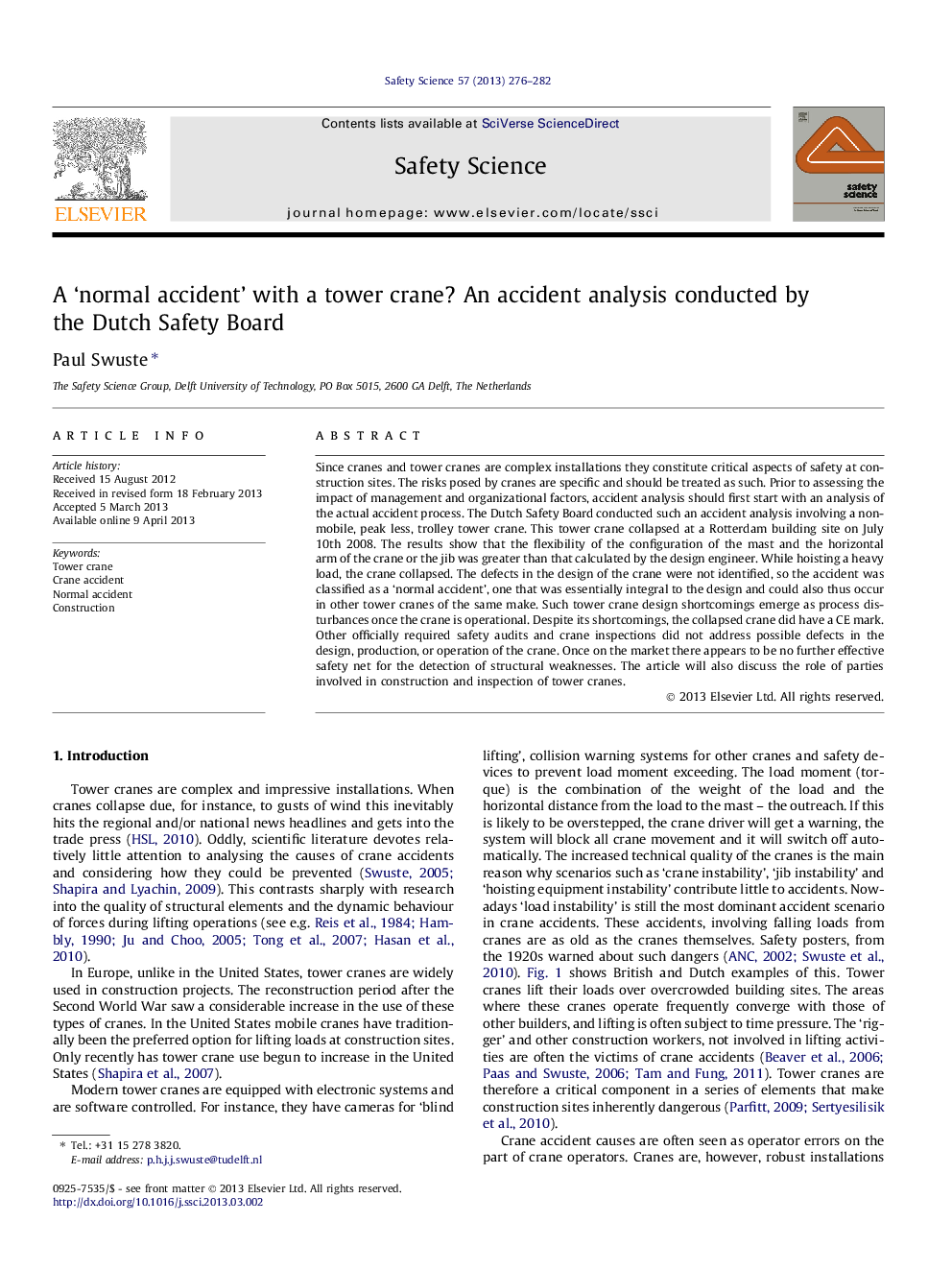| کد مقاله | کد نشریه | سال انتشار | مقاله انگلیسی | نسخه تمام متن |
|---|---|---|---|---|
| 589558 | 1453413 | 2013 | 7 صفحه PDF | دانلود رایگان |
کلمات کلیدی
1.مقدمه
2. روش
شکل 1. پوسترهای هلندی و بریتانیایی در مورد ایمنی جرثقیل مربوط به دهه 1920 (ANC، 2002) متن پوستر هلندی (van onderen!: below! , gevaarlijke plaats: hazardous location).
3. نتایج
3.1 شرایط حادثه
3.2 تحقیقات فنی، سناریوی 1: بیش از حد شدن پارامترهای عملیاتی
3.3 تحقیقات فنی، سناریوی 2: عدم موفقیت در ساخت تاور
3.4 تحقیقات فنی، سناریوی 3: اضافه بار
شکل 2. تاور کرین با پیک کم (OVV، 2009).
شکل 3. پیامدهای حادثه (منبع: TV Rijnmond - عکس سمت چپ، Cees Paas - عکس سمت راست).
3.5 حادثه عادی
3.6 گروههای ذینفع و رژیم های بازرسی
شکل 4. خم شدن بازوی متحرک، شکل بالا-بیکار، 0.5درجه بالاتر از سطح، شکل کم، بارگیری شده با 13 تن، 2.1 درجه زیر سطح (منبع: OVV، 2009).
4. بحث و نتیجهگیری
• Research of a tower crane accident in The Netherlands was conducted by the Dutch Safety Board.
• The direct accident scenario is ‘load instability’.
• The tower crane accident was a ‘normal accident’, caused by structural design errors.
• A CE mark of the crane did not prevent the accident, neither did safety audits and inspections.
• Once on the market there was no effective safety net to detect the defects.
Since cranes and tower cranes are complex installations they constitute critical aspects of safety at construction sites. The risks posed by cranes are specific and should be treated as such. Prior to assessing the impact of management and organizational factors, accident analysis should first start with an analysis of the actual accident process. The Dutch Safety Board conducted such an accident analysis involving a non-mobile, peak less, trolley tower crane. This tower crane collapsed at a Rotterdam building site on July 10th 2008. The results show that the flexibility of the configuration of the mast and the horizontal arm of the crane or the jib was greater than that calculated by the design engineer. While hoisting a heavy load, the crane collapsed. The defects in the design of the crane were not identified, so the accident was classified as a ‘normal accident’, one that was essentially integral to the design and could also thus occur in other tower cranes of the same make. Such tower crane design shortcomings emerge as process disturbances once the crane is operational. Despite its shortcomings, the collapsed crane did have a CE mark. Other officially required safety audits and crane inspections did not address possible defects in the design, production, or operation of the crane. Once on the market there appears to be no further effective safety net for the detection of structural weaknesses. The article will also discuss the role of parties involved in construction and inspection of tower cranes.
Journal: Safety Science - Volume 57, August 2013, Pages 276–282
